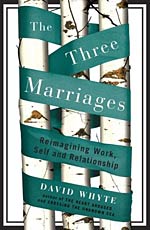Here’s a question for you. How do you think small businesses will need to change to meet the challenges of tomorrow, and by the way, what does your crystal ball show for those challenges?
I’ve been acting as a Workplace Design Consultant on Tomorrow’s Workplace, a project sponsored by the Surrey Board of Trade. The project hopes to discover what can help good small businesses handle the challenges of the future and move toward being a great small business in the process.
When the project began we really didn’t have a clear idea of what might be needed, but as we’ve moved forward with the businesses in the pilot (one is an engineering firm, one a lumber products company and one sells promotional products for events and a wide variety of other uses) we’ve discovered some common themes even though the business activity differs greatly from business to business.
1. It is more important than ever to be focused and clear about the business you are in and who you are as a brand.
2. Building alliances with other businesses and with the community helps both the business and the community.
3. Learning how to communicate well in the midst of change is a core competency.
The project website has information on the project process and insights, podcasts from team members and more. Here’s the link: http://www.tomorrowsworkplace.net/

 Steve McCallion’s Fast Company article,
Steve McCallion’s Fast Company article, 